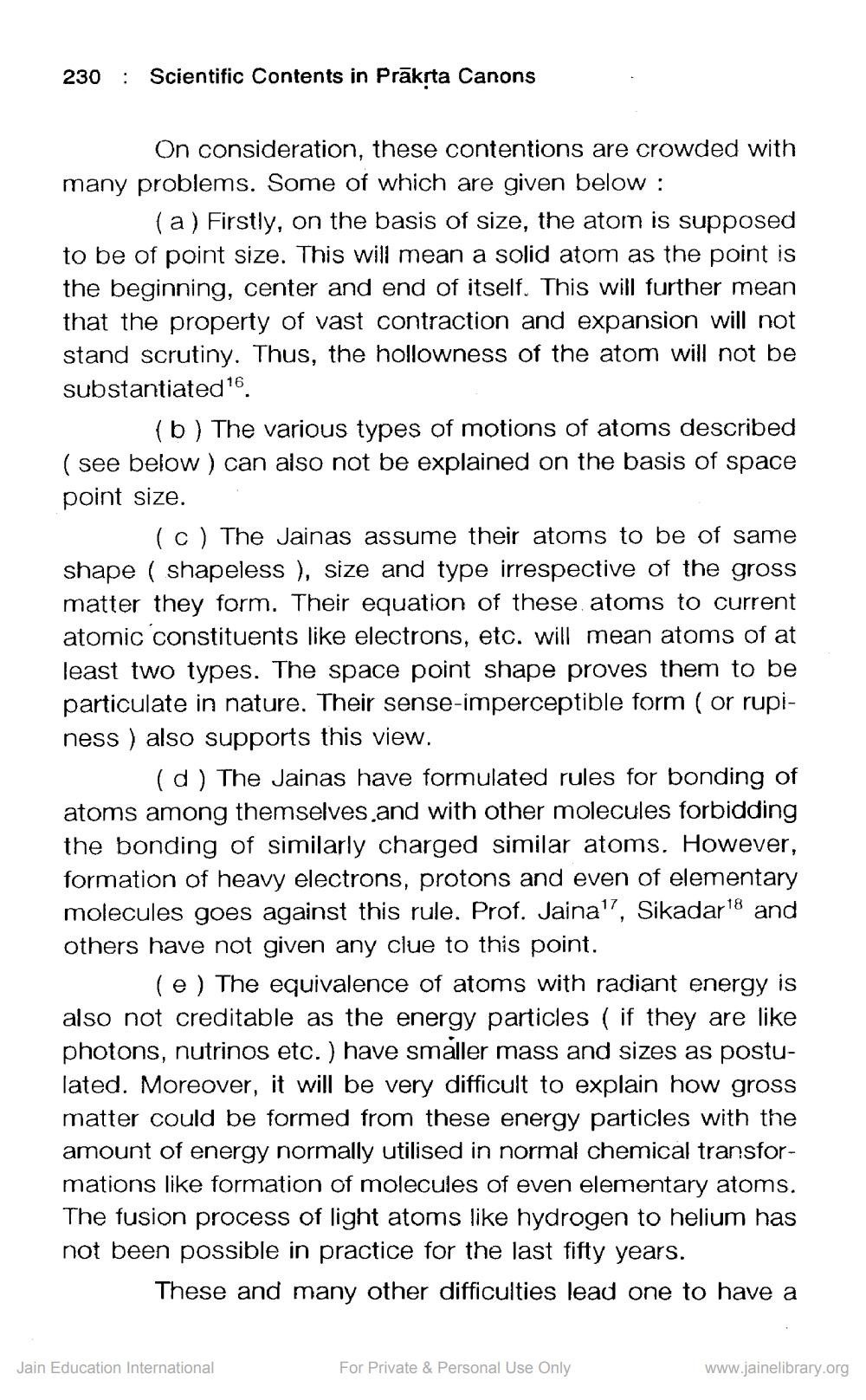________________
230 : Scientific Contents in Prākṛta Canons
On consideration, these contentions are crowded with many problems. Some of which are given below:
(a) Firstly, on the basis of size, the atom is supposed to be of point size. This will mean a solid atom as the point is the beginning, center and end of itself. This will further mean that the property of vast contraction and expansion will not stand scrutiny. Thus, the hollowness of the atom will not be substantiated16.
(b) The various types of motions of atoms described (see below) can also not be explained on the basis of space point size.
(c) The Jainas assume their atoms to be of same shape (shapeless ), size and type irrespective of the gross matter they form. Their equation of these atoms to current atomic constituents like electrons, etc. will mean atoms of at least two types. The space point shape proves them to be particulate in nature. Their sense-imperceptible form ( or rupiness) also supports this view.
(d) The Jainas have formulated rules for bonding of atoms among themselves and with other molecules forbidding the bonding of similarly charged similar atoms. However, formation of heavy electrons, protons and even of elementary molecules goes against this rule. Prof. Jaina17, Sikadar18 and others have not given any clue to this point.
(e) The equivalence of atoms with radiant energy is also not creditable as the energy particles (if they are like photons, nutrinos etc.) have smaller mass and sizes as postulated. Moreover, it will be very difficult to explain how gross matter could be formed from these energy particles with the amount of energy normally utilised in normal chemical transformations like formation of molecules of even elementary atoms. The fusion process of light atoms like hydrogen to helium has not been possible in practice for the last fifty years.
These and many other difficulties lead one to have a
Jain Education International
For Private & Personal Use Only
www.jainelibrary.org




